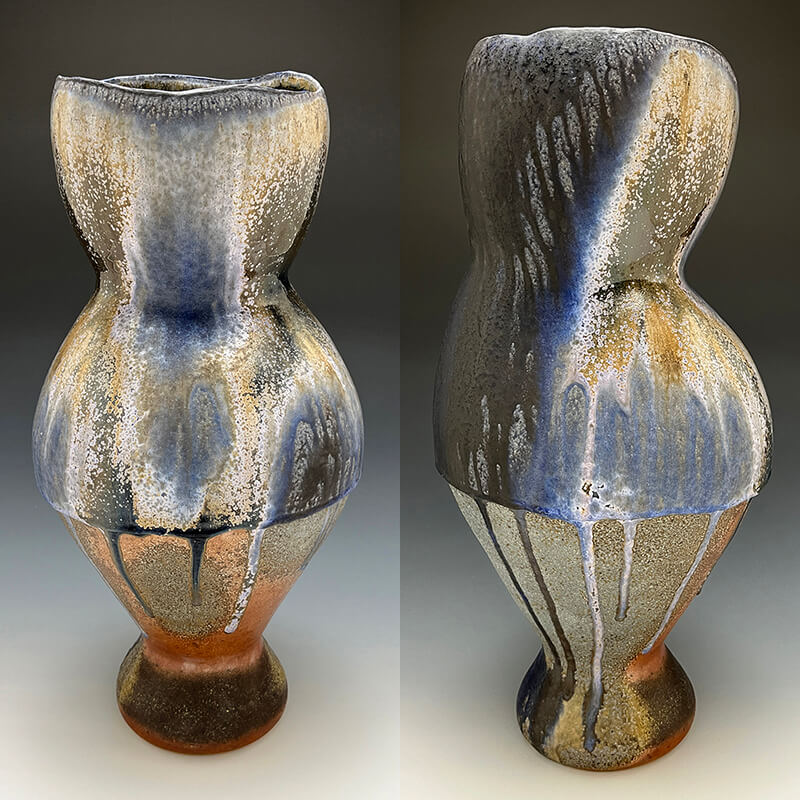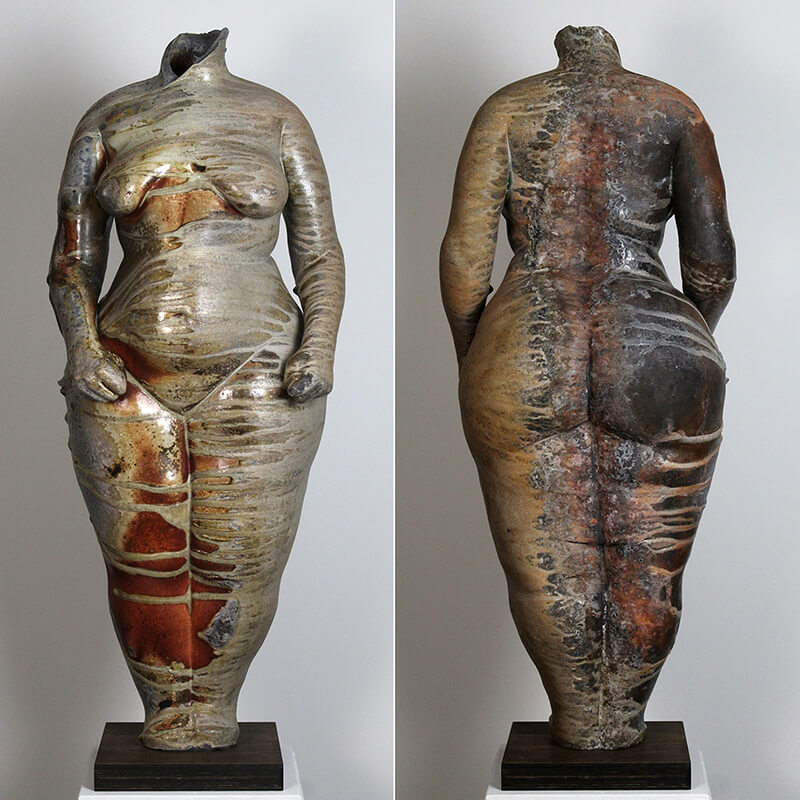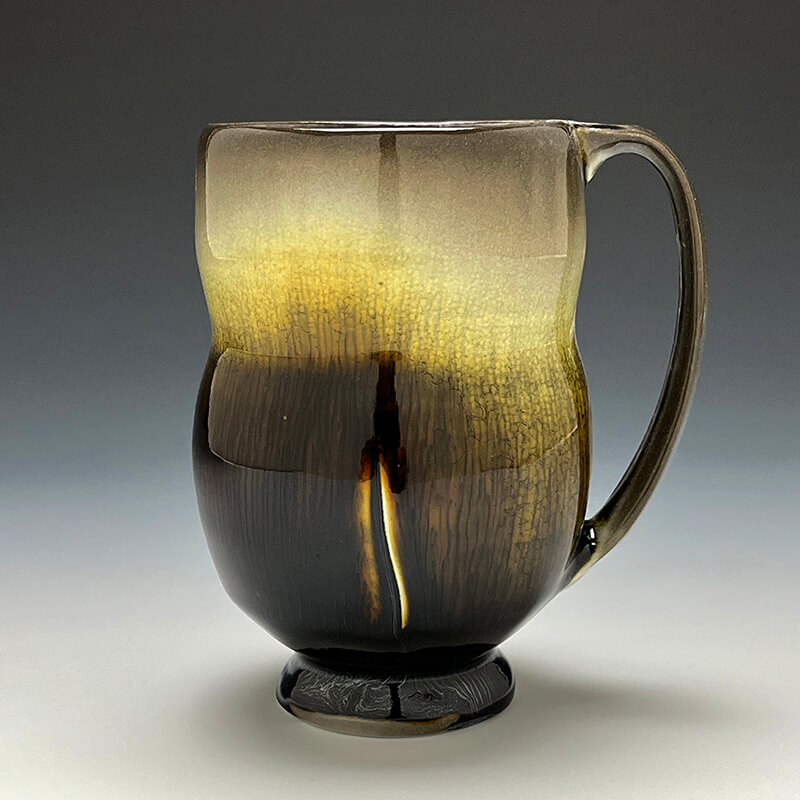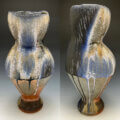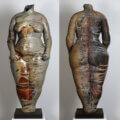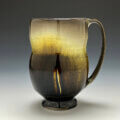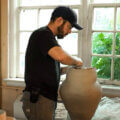
Red Lodge Clay Center – Short-Term Resident 2024
My first wood firing was in 2001 during my first semester of undergraduate ceramics at Bowling Green State University in Ohio. Our studio had about 70 undergraduate students, 3 graduate students, and two faculty. The grads led the firings. The professors kept an eye everyone but let us figure things out. I was a beginner and majoring in education, but they recruited me to help because I was around all the time. The house I grew up in was heated with wood, so I knew how to cut and stack it, and I could make myself useful around the kiln. I didn’t love the results of the firing, but I enjoyed the people. They were earnest and generous, and I wanted to be like them, so I changed my major to 3D Art and kept doing it.
When looking for a graduate degree program, I narrowed my focus on schools that had wood firing traditions. Utah State University became my top choice after visiting, and I enjoyed a great cohort of artists who had moved to the mountains to fire wood kilns! We were happy with our results by then, and we enjoyed some success professionally upon graduating. During that time, I spent a summer abroad in South Korea, where I built a train kiln for Oh Hyang Jong. It was the first kiln-building project that I led, and the story of his kilns continues today.
I became a professor because I love teaching: it was my first undergraduate major. When I interviewed for university teaching positions, I made it clear that I was there to build kilns and fire with students. Fortunately, they still hired me. We’ve built a few kilns at Queens University of Charlotte in North Carolina. It’s an urban campus, where it’s unusual to see cords of wood and a 6-cubic-meter kiln, but people like to watch other people work, so it works well. We fire about 3 times per year. We’re a small school with 2500 total students, only 12 majoring in Art. Our crew is mostly beginners with a few experienced people around long enough before they graduate. I’m very proud that a few of my recent students are enjoying success in the field.
Initially inspired by a social group at a hotel bar, I began referencing big ladies dancing 20 years ago as an undergraduate art student. They gathered on Fridays to celebrate their beauty, which was an unexpected discovery for me at the time. I recognized myself as the “other” in this equation, and I remain grateful for the lessons I learn in a state of vulnerability. My current iterations of these subjects are informed by fashion models who share highly curated images of their bodies to express their pride and promote an idealized beauty. The work also acknowledges artifacts created over scores of millennia, illustrating this universal human interest as far back as we can see.
The subject matter remains precarious for me as I engage discussions about sexist objectification, self-objectification, voyeurism, and fetishism with people who are either uncomfortable with the subjects or appreciate that it’s being observed and articulated. In the most literal sense, I’m objectifying women’s bodies by transforming the malleable substance of clay into durable stoneware that could survive for millennia. Through the lens of cultural context, I’m interpreting contemporary human phenomena while exploring my curiosity about ideal beauty in an expansive lineage of similar observations.
My Venus Figures shifted in emphasis as the Dobbs decision was announced. Previous iterations also celebrated women’s power, but the ones since have stood defiantly. A fist and middle finger are aberrations from traditional depictions of Venus; an apt departure given the threat to women’s power.
My making cycles usually begin with a scheduled firing of a wood-burning kiln: ancient Chinese technology elevated to high-art in Medieval Japan, revived by the Mingei movement a century ago, then made accessible by Western potters who began building derivations of those kilns in the 1980s. Many other cultures have a history of burning wood to harden clay, but the big kilns that require the week-long attention of a whole community are what I’ve pursued for the last two decades. The kiln I built on campus at Queens University of Charlotte is 200cubic feet and requires 500 collective hours from a group of about 12 people to fire. It’s a useful way to learn the fundamental elements of process and chemistry, but the shared experience is what I love. A transformation happens outside of the kiln that is more meaningful than the one inside – At least in this lifetime.

